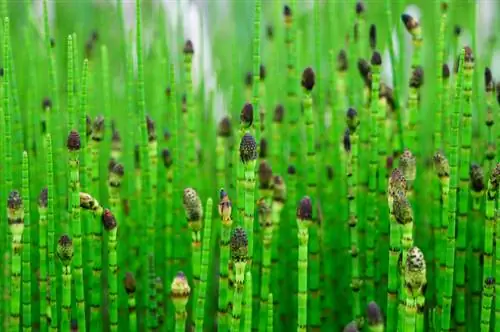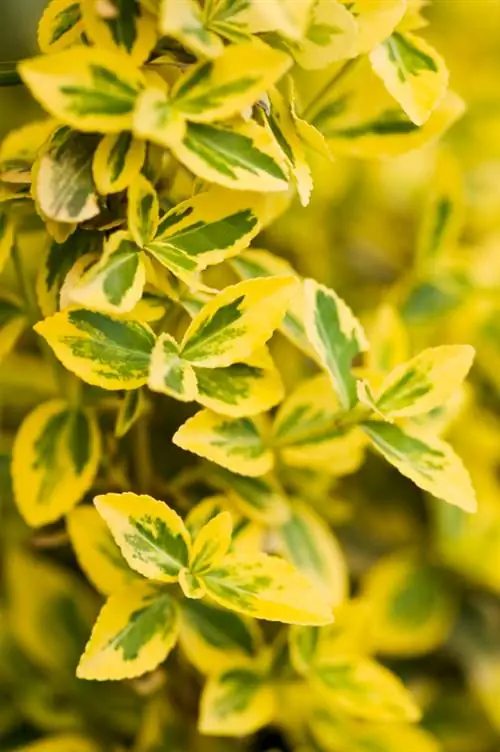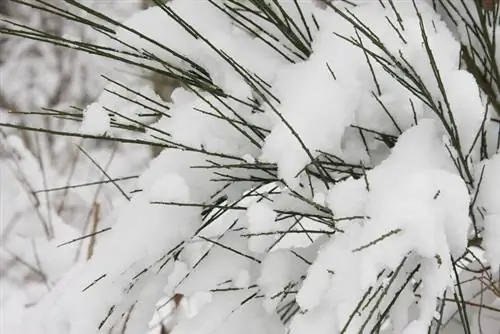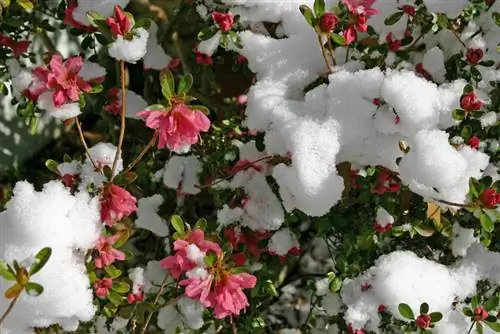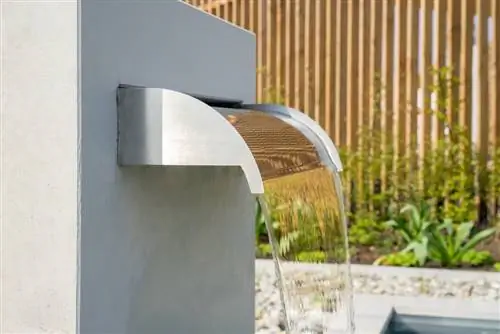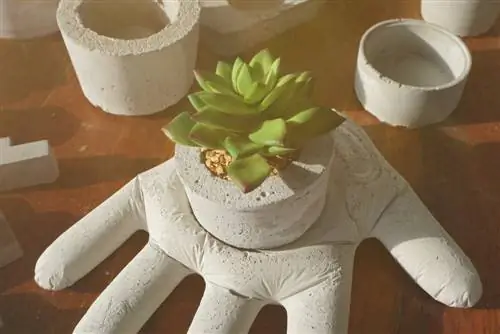- Author admin [email protected].
- Public 2023-12-16 16:46.
- Last modified 2025-01-23 11:20.
The Japanese horsetail is one of the decorative and very easy-care aquatic plants for ponds and pots. You can hardly go wrong when it comes to care. How to care for Japanese horsetail.
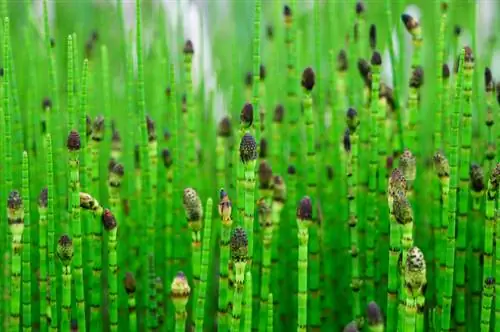
How do I care for Japanese horsetail properly?
Japanese horsetail requires little care: 1. Allow short-term dry periods, but replenish water if necessary, 2. Fertilizer usually not necessary, 3. If the growth is too dense, thin out and remove ear sprouts, 4. Divide every 2-3 years, 5. Overwinter frost-free if kept in containers.
Can Japanese horsetail dry out for a short time?
Short dry periods do not affect the Japanese horsetail. You should prevent longer dry periods by filling up the pond or bucket.
Does Japanese horsetail need fertilizer?
Japanese horsetail, like all horsetails, is not demanding. Fertilizer is usually not necessary. If the plant is worried, you can use special fertilizer in ball form (€9.00 on Amazon).
Does Japanese horsetail need to be cut?
- Pruning in spring
- Thinning out plants
- Cut ear sprouts immediately
You only need to cut the plant if it grows too densely. New shoots can then no longer grow. Thin out the horsetail in the pond or pot by cutting out older shoots close to the ground.
You should remove the ear sprouts as soon as possible, as horsetail reproduces via the spores.
Should horsetail be divided?
When caring for it in a pot, you should remove Japanese horsetail every two to three years. Divide the rhizomes into two or more parts. Put only a part back in the bucket and throw away the rest.
Even when kept in the pond, the Japanese horsetail will appreciate it if you rejuvenate it by dividing it every few years.
What care does Japanese horsetail need in a pot?
Caring for Japanese horsetail in a pot is no different from caring for it in a pond. If necessary, you will have to refill the pot with water more often as evaporation is higher.
To combat mosquitoes, you can let the planting substrate dry out for a very short time, as the mosquito larvae cannot survive drought. However, the dry phase should under no circumstances last longer than one or two days.
Does Japanese horsetail need to be overwintered?
Japanese horsetail is well hardy in ponds. If there is very strong frost, it may make sense to cover the plant with brushwood.
When caring for it in a pot, you should overwinter Japanese horsetail frost-free.
Tip
Japanese horsetail, like the swamp horsetail, is partly poisonous. Therefore, dispose of cut plant parts carefully. Under no circumstances should Japanese horsetail be eaten.

